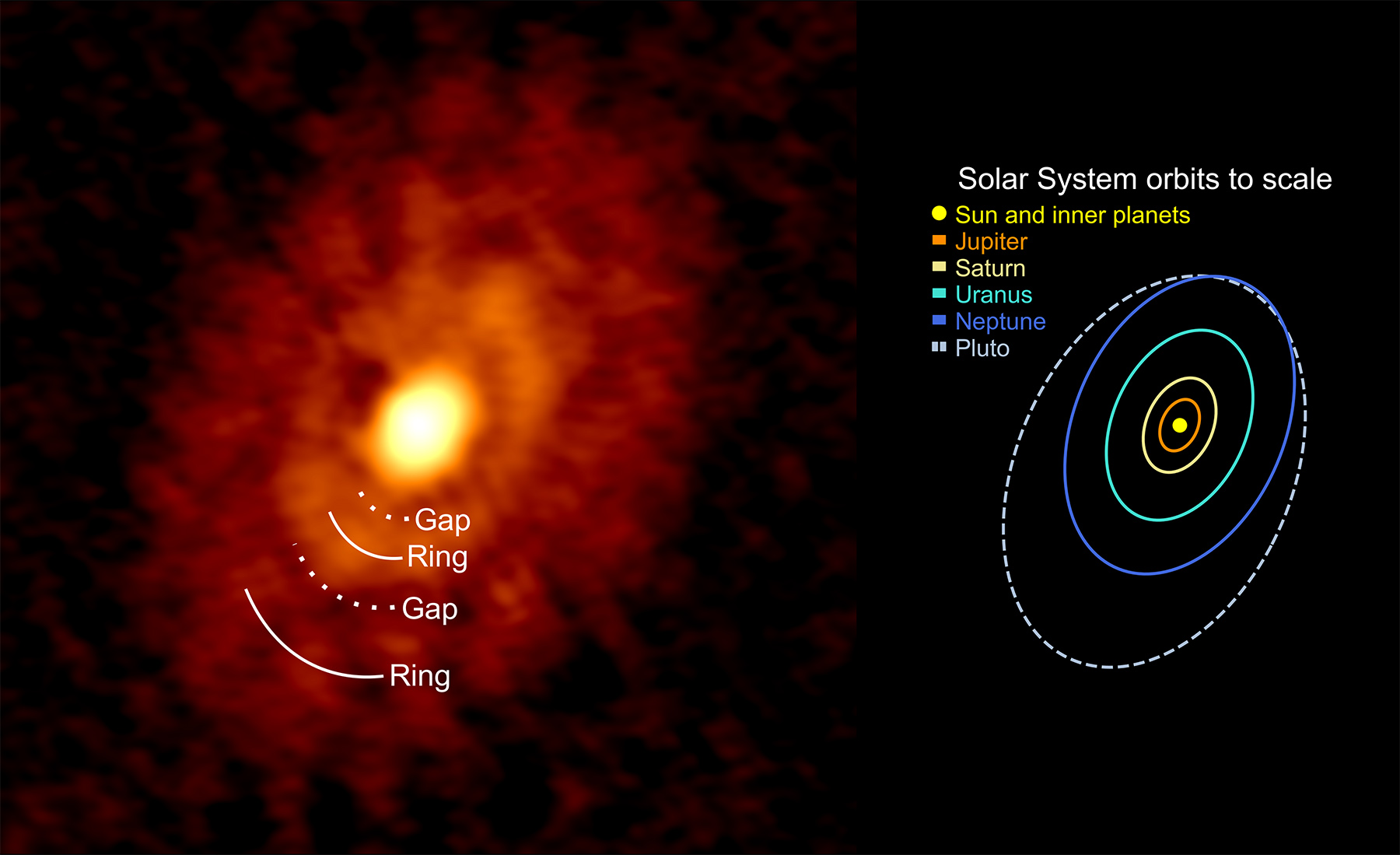Image List
-

This ALMA image shows the young planetforming dust rings surrounding the IRS 63 protostar, which is younger than 500,000 years old.
MPE/D. Segura-Cox Data credit: ALMA (ESO/NAOJ/NRAO) -

The rings and gaps in the IRS 63 dust disk are shown next to a sketch of the Solar System orbits drawn at the same size scale and orientation of the IRS 63 disk. The locations of the rings are similar to the locations of objects in our own Solar System, with the inner ring about the size of Neptune's orbit and the outer ring a little larger than Pluto's orbit.
MPE/D. Segura-Cox Data credit: ALMA (ESO/NAOJ/NRAO) -

The dense L1709 region of the Ophiuchus Molecular Cloud mapped by the Herschel Space Telescope, which surrounds and feeds material to the much smaller IRS 63 protostar and planet-forming disk (location marked by the black x).
MPE/D. Segura-Cox Data credit: ESA/Herschel/SPIRE/PACS/D. Arzoumanian